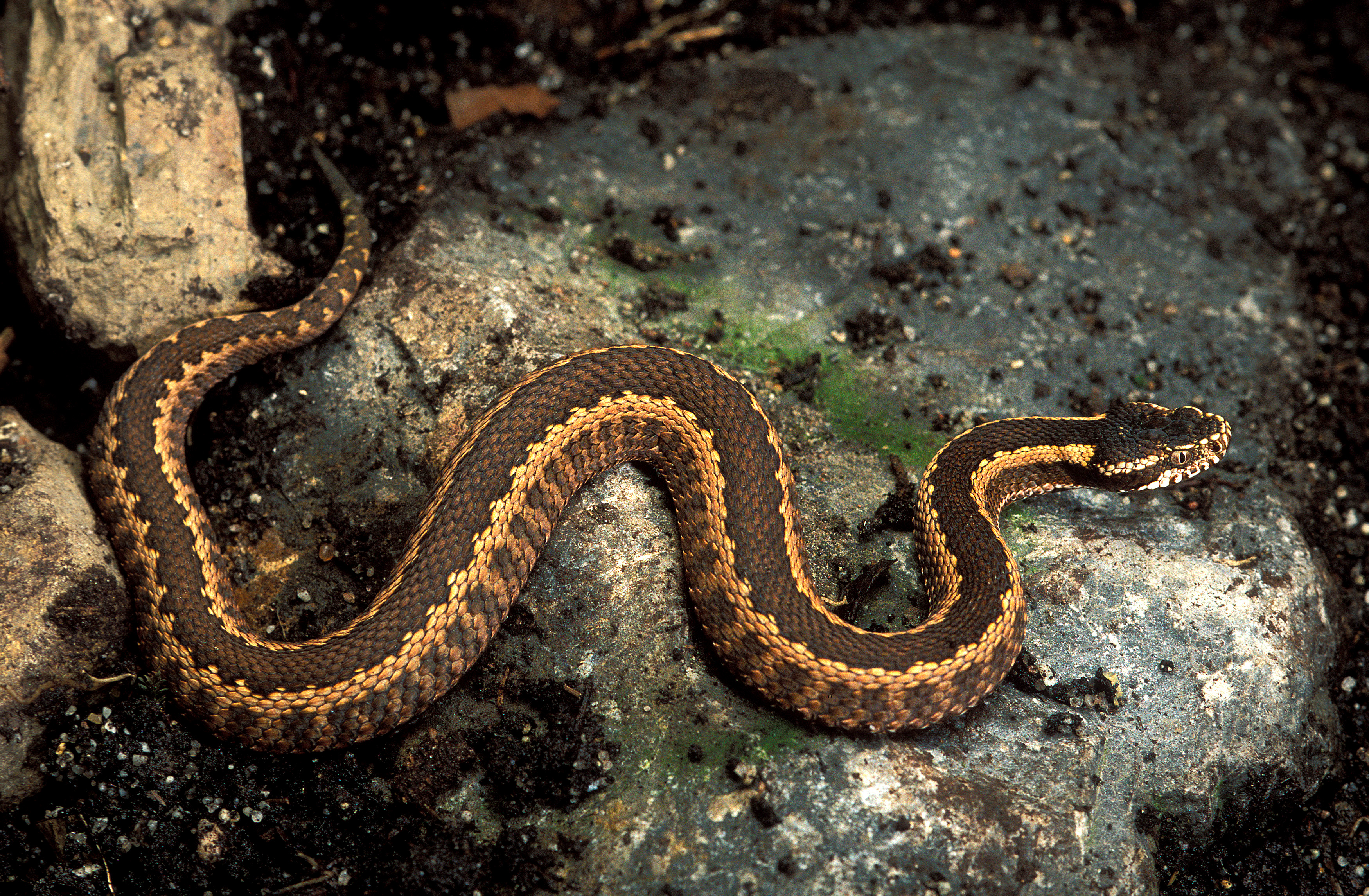Caucasus Viper
(Vipera dinniki)

Description
Vipera kaznakovi is a species of venomous snake in the subfamily Viperinae of the family Viperidae. The species is endemic to Turkey, Georgia, and Russia. No subspecies are currently recognized. Vipera kaznakovi is a stoutly built species, of which the males are usually shorter and more slender than the females. Adults may reach a maximum total length (including tail) of 65 to 70 cm (26 to 28 in), but are usually less. Orlov and Tuniyev examined 39 specimens. Of the 23 males examined, the largest measured 47.5 cm (18.7 in) total length; while of the 16 females, the largest was 60 cm (24 in) total length. Vipera kaznakovi inhabits the forested slopes of mountains, the beds of wet ravines, and post-forested clearings. It has been recorded from azalea and scumpea-Cornelian cherry groves; mixed-subtropical forests with an evergreen underwood; chestnut groves; beech, willow, and alder woods; and from polydominant forests near river terraces and on large growing-over scree. At the upper limit of its altitudinal distribution this snake reaches the coniferous forests zone, but is not found deep in this forest type. It has been recorded from the ecotone of beech-fir forest and motley grass. It may also be found in areas of tea cultivation (Baran and Atatur, 1998). On the Black Sea coast it emerges from hibernation in March, but at altitudes of 600-800 m (2,000-2,600 ft) above sea level it emerges in the second half of April or the beginning of May. It reproduces from the end of March up to the middle of May. Hibernation begins at the start of November for coastal populations, and at the end of September or the beginning of October for highland populations. The young appear at the end of August or the beginning of September. The species V. kaznakovi is classified as Endangered (EN) according to the IUCN Red List of Threatened Species with the following criteria: A1cd+2 cd (v2.3, 1994). This indicates that the species is not critically endangered, but is facing a very high risk of extinction in the wild in the near future. This is due to an observed, estimated, inferred or suspected reduction in population of at least 50% over the last 10 years or three generations, whichever is the longer, based on a decline in area of occupancy, extent of occurrence and/or quality of habitat, as well as actual or potential levels of exploitation.
Taxonomic tree:







